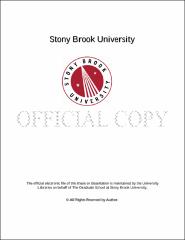| dcterms.abstract | Risk analysis is one of the central parts of modern finance theory. It covers various topics: modeling, measuring, managing, and forecasting risk and returns. The purpose of this dissertation is to describe the recent methodology of risk analysis and to show its practical applications. Chapter 1 is dedicated to review the quantitative methodology of recent risk analysis, in which three components are presented in order to discuss its nature. The first component is the modeling of marginal distribution: The flaws of the Gaussian distribution and the alternative distributions based on the theory of the Levy process are discussed. The second component is the modeling of joint distribution: A copula model, a factor model, and independent component analysis are discussed. The third component is the definition of risk and its measurements: The idea of value at risk (VaR) is introduced. In Chapter 2, we present a practical example of how to construct a portfolio based on the return model and risk measure. The result is tested by the method of backtesting. Consequently, it is found that (1) the ARMA-GARCH model with classical tempered stable (CTS) distribution provides better prediction than that with the normal and Student-t distribution, and (2) average VaR (AVaR) provides a better risk measure than variance. It is also suggested that the number of universe has effect on the portfolio return, and that it is effective to reduce stock universe to large capitalization stocks. In Chapter 3, we analyze the distribution of returns on seven major Eurozone sovereign bonds (France, Germany, Greece, Ireland, Italy, Portugal, and Spain) and their co-movement. We investigate the ARMA-GARCH models based on different assumptions about the innovations: Gaussian, Student-t, CTS, normal tempered stable (NTS), and alpha-stable. For each of the five models, we apply four copula functions, and assess the forecasting performance of combinations of these models. In addition, to find a forward-looking measure to detect the financial crisis of Greece, we analyze the evolution of the tail parameter over time. In Chapter 4, we discusses the goodness of fitting of independent component analysis (ICA) using the sovereign CDS premiums of 11 Eurozone countries (Austria, Belgium, Finland, France, Germany, Greece, Ireland, Italy, Netherlands, Portugal, and Spain). Based on the log-likelihood, the Akaike information criterion and the Bayesian information criterion, we first show the fitness of ICA is as good as more complicated models such as the ARMA-GARCH and Student-t copula model. Also, using the structural default model based on CDS premium, we found that the characteristics of joint defaults based on ICA seem different from those based on copula. | |

